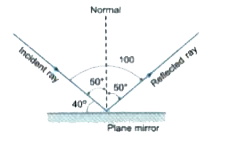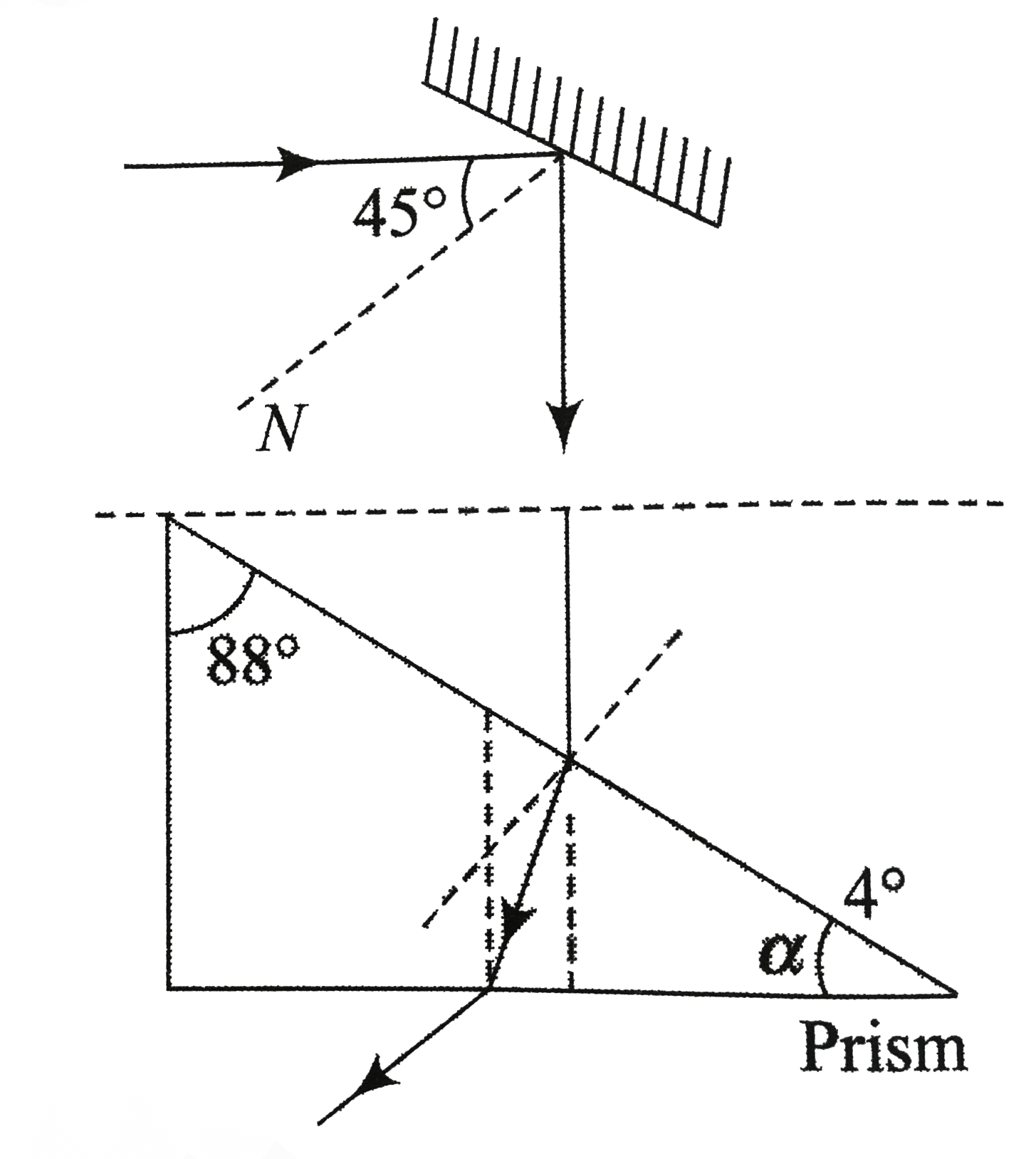A ray strikes the mirror normally, what is the angle of incidence?
Step by step video & image solution for A ray strikes the mirror normally, what is the angle of incidence? by Physics experts to help you in doubts & scoring excellent marks in Class 10 exams.
Topper's Solved these Questions
Similar Questions
The angle between an incident ray and the mirror is 40∘.
(i) What is the angle of incidence?
(ii) What is the angle of reflection?
(iii) What is the total angle through which the ray of light turns?
 View Solution
View SolutionA ray of light strikes a plane mirror at an angle of incidence 45∘ as shown in Figure . After reflection,l the ray passes through a prism of refractive indes 1.5 whos apex angle is 4∘. Through what angle must the mirror be rotated it total deviation of the ray be 90∘ ?
 View Solution
View Solution
Knowledge Check
- Question 1 - Select One
A ray, emerging from a point on the object, passing through the centre of curvature C strikes the mirror normally i.e. at 90∘. Then, the angle of incidence is equal to
 A0∘B45∘C90∘D180∘
A0∘B45∘C90∘D180∘ - Question 2 - Select One
A plane mirror lies face up, making an angle of 15∘ with the horizontal .A ray of length shines down vertically on the mirror .What is the angle of incidence? What will be the angle between the reflection ray and the horizontal?
A15∘B60∘C45∘D30∘ - Question 3 - Select One
A ray, emerging from a point on the object, passing through the centre of curvature C strikes the mirror normally i.e. at 90∘. Then, the angle of reflection is equal to
 A0∘B45∘C90∘D180∘
A0∘B45∘C90∘D180∘
A vertical ray of light strikes the horizontal surface of some water:
a) What is the angle of incidence?
b) What is the angle of refraction?View SolutionIf the angle between incident ray and reflected ray is 120∘, what is the angle of incidence ?
View SolutionA ray of light strikes a glass slab at an angle of 50∘ with the normal to the surface of the slab. What is the angle of incidence?
View SolutionA ray of light strikes a glass slab at an angle of 50∘ with the normal to the surface of the slab. What is the angle of incidence?
View SolutionWhen a ray of light is incident normally on a surface, then
View Solution

